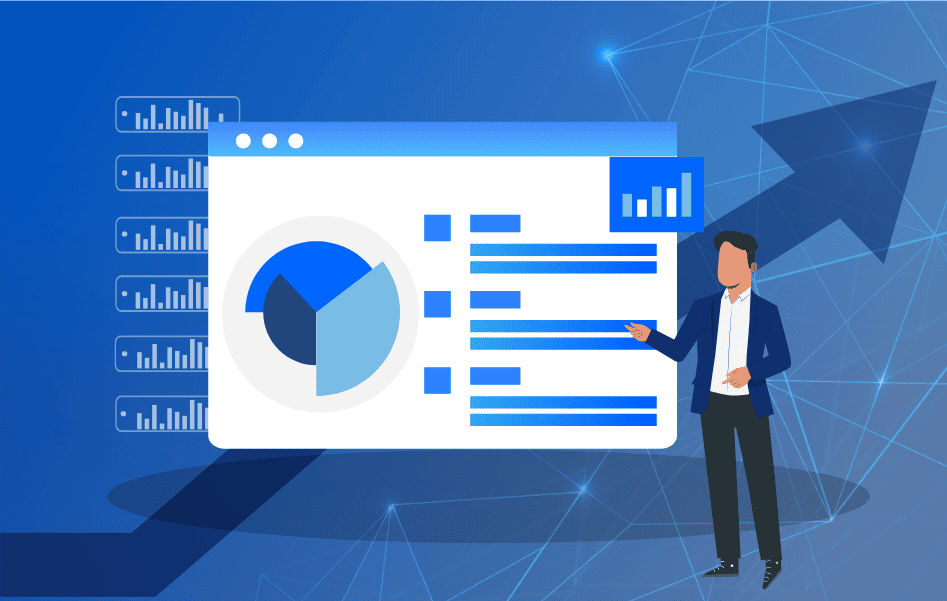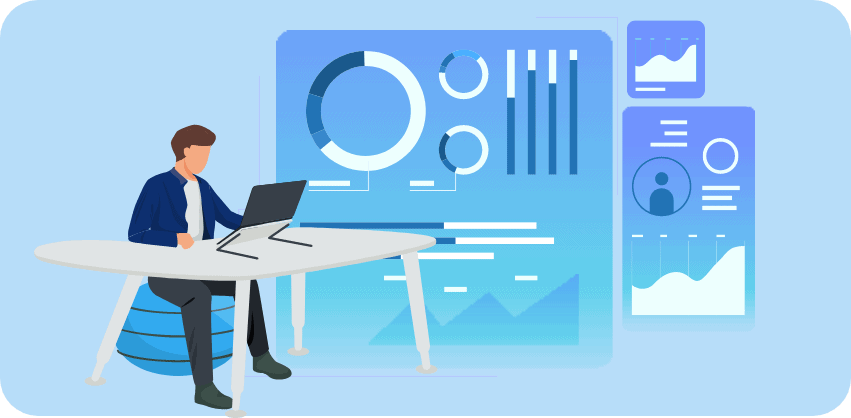Let us now simplify this equation. Demographics is the data that projects the population in a certain area or specialty based on age, gender, income, and location. This data helps in studying groups of people based on the categories in which they belong.
Technographic data includes information about a company’s tendencies to purchase technology, the use of these technologies, adoption rates, existing challenges, and the challenges that can be presented in the future for the company. It acts as a bridge to close the gap between potential conversions and practical insight of a company. It can open up the DNA of a company’s tech infrastructure to a business.
Technographics may be a term that has created a buzz in recent years, but it has been developing and growing among B2B marketers and businesses even before 2017. It can be traced back to the late 1980s and 1990s when technology took over the world in a new fashion. The seed for technographic data was sowed way back when the arrival and growth of the internet, personal computers, online games, and other devices started taking importance in every household. Thus, when companies realized the potential of purchasing data, technographic targeting was born. Companies quickly began gathering data on likelihood of purchase, brand preferences, and wealth to purchase. This was later coined as technographic data or technographics.
It is worth mentioning that demographic data, firmographic data, technographic data, and social technographic data differ from one another. While technographic and social technographic data share similarities, they diverge in the information they provide to organizations.
With slight distinction, technographics, as mentioned above, discusses an organization’s software, hardware, networking technologies, and more. On the other hand, social technographic data deals with the organization’s consumption and usage of social media. It points out software in play, challenges, and pain points that need to be addressed from a social media point of view.
It is simple. Businesses see that people’s lives revolve around technology. As technology becomes more integrated into daily life, businesses must adapt their marketing campaigns to meet the increasingly high demands of consumers. Gone are the days when a one-size-fits-all approach attracted prospects to your business.
It is time to adapt and bring new tactics for growth. Technographic data enables your firm to tailor campaigns and strategies based on the popular technology your target audience employs. By bringing this precision to your marketing campaigns, you can enhance customer engagement and conversion rates. It is important to note that precision targeting based on the technology stack is an added advantage for your marketing initiatives.
Another aspect of why we need technographic data is strategic technographic marketing. Strategic planning and positioning of your products and solutions are the keys to walking straight into the view of a decision-maker.
By understanding the technical aspects, loopholes, gaps, and challenges via technographic data, you can position your solutions strategically from the prospect’s viewpoint. By leveraging technographics, you can resonate effectively with your target audience and win over customers who matter to you.
A new aspect that has become confusing to new marketers is technographic segmentation. As it moves ahead from demographic profiling, technographic segmentation is audience targeting based on technology.
The target audience is categorized based on tech stacks, tools, and adoption time. This segmentation based on technology enables marketing and sales teams to build strategies and campaigns that resonate well with potential customers. Marketers can also easily address challenges and pain points with each segment.
In this section, we do not just address the ‘why’ for technographics but also the benefits of technographics data. Understanding the benefits provides an answer to why businesses need to segment data by technographics for better reach and hold in the market.
There are three significant ways technographic data can be utilized for better-targeted campaigns.
The B2B industry is growing, and so are the products and solutions businesses provide. As the industry evolves to match the growth rate of the information technology and services sector, it can be challenging to reach the right audience who needs your solutions. Hence, technographics is your solution to narrow down your audience.
Technographics enables sales and marketing teams to build the right strategy to target the audience. They are prepared when provided with a detailed report of their prospect’s technology stack. The intelligence and insights they get via technographic data help them build campaigns that are unique to each prospect. It helps them transform their approach towards lead generation and engagement strategies.
When technographic data is presented to sales and marketing teams, they can find common ground with robust data and work towards collaboration. A marketing campaign will succeed with flying colors only when these two teams join forces.
Absolutely! This is your chance to create an unforgettable campaign. By simply understanding technographic targeting, you can target the right companies by focusing on their requirements and pain points.
Technographic targeting involves marketers getting data on a particular company’s software usage, hardware supply preferences, and online behavior. These insights can help you build a profile, which can give you a detailed understanding of your target audience and their habits in the B2B industry. Now, you will be equipped with information that helps you build personalized campaigns and targeted approaches for effective sales.
How can you make sure that you are effectively implementing technographic targeting? It is as easy as working on audience profiling and user profiling via technographic profiling.
A precious asset to a marketer is technographics, which maintains valuable client relationships with Account-based marketing. ABM’s main motive is to showcase your capabilities to the customer. The customer needs to see that you understand every need and requirement through your emails. It is about anticipating the customer’s demands, assuring them you have a solution, and presenting yourself as their success partner. Technographics play a key role in making this a reality.
Technographic data presents the following benefits alongside ABM for your business –
Why not? We have some simple examples for you to explore and comprehend the concept.
Suppose you are a business offering CRM solutions to customers in the market. The technographic data helps you identify different CRM systems including HubSpot, Salesforce, Zoho, Zendesk, and more. If your solutions are compatible with these systems, you can request technographic data that gives you information on how much these systems are used in a company. This data provides valuable insights such as the adoption timeline, previously installed tech stack, and more.
Another instance is cloud service providers. Your technographic data can show which potential customer is utilizing a particular service. You can further personalize your approach and offer solutions such as security features, scalability, and more that are specific to the provider.
How can one get technographic data from the market? There are three ways you can collect technographic data for business campaigns.
The oldest trick in the book for collecting information is surveys. This can be done with calls, emails, social media, and polls. However, in some cases, prospects may not answer all the questions or leave them unanswered altogether. This may not be an ideal method to collect information.
An excellent choice for technographic data, third-party vendors with email lists can be your best bet to get data. Database providers like DataCaptive will do the grunt work for you while you focus on building a strategy. We help you by providing the data, and you can work towards implementing technographic targeting right away.
Technographic data is essential to identify potential customers. It can include purchases, upgrades, replacements, and more. It helps you customize your marketing approach based on the specific requirements of your ideal customers.
The real power of technographics lies in technographics with intent data. When combined, they can bring remarkable outcomes and profits for the business. It enables effective marketing strategies and a higher percentage of conversions for the brand.







